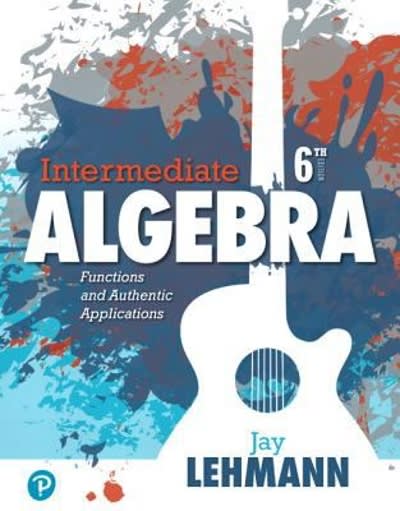Question
The first two questions refer to the following information: Researchers developed an online tool to help people decide what to write in emails by analyzing
The first two questions refer to the following information:
Researchers developed an online tool to help people decide what to write in emails by analyzing the content and making suggestions. A study measuring the time it takes to write emails randomly sampled 100 older participants using the new predictive content tool and 122 younger participants using the new predictive content tool, and measured the time it took to write each email over a week. The researchers suspected that the mean email duration for older participants using the new predictive content tool is higher than for the 122 younger participants using the new predictive content tool because older adults may already be set in their ways and want to use the phrases that they have been using in practice already over the years while younger adults may welcome the social strategies and professional development guidance. They wanted to check whether data would support this hypothesis.
Question 1
This is not a form; we suggest that you use the browse mode and read all parts of the question carefully.
If 1 and 2 represent the mean time per email for older and younger adults respectively, which of the following is the appropriate pair of hypotheses in this case?
Ho:12=0Ha:12<0Ho:1-2=0Ha:1-2<0
Ho:12>0Ha:12=0Ho:1-2>0Ha:1-2=0
Ho:1=2Ha:1>2Ho:1=2Ha:1>2
Ho:12<0Ha:12=0Ho:1-2<0Ha:1-2=0
Ho:12=0Ha:120Ho:1-2=0Ha:1-20
Ho:1=2Ha:122Ho:1=2Ha:122
Question 2
This is not a form; we suggest that you use the browse mode and read all parts of the question carefully.
The following is the output for the t-test: T-value: 2.10 P-Value: .02
Using a significance level of .05, what conclusion would you make?
The data do provide sufficient evidence that the mean time spent per email for older adults is greater than that for younger adults.
The data do not provide sufficient evidence that the mean time spent per email for older adults is greater than that for younger adults.
The data do provide sufficient evidence that the time spent per email for older adults is no different than for younger adults.
The data do not provide sufficient evidence that the time spent per email for older adults is no different than for younger adults so we accept the null hypothesis.
Step by Step Solution
There are 3 Steps involved in it
Step: 1

Get Instant Access to Expert-Tailored Solutions
See step-by-step solutions with expert insights and AI powered tools for academic success
Step: 2

Step: 3

Ace Your Homework with AI
Get the answers you need in no time with our AI-driven, step-by-step assistance
Get Started


